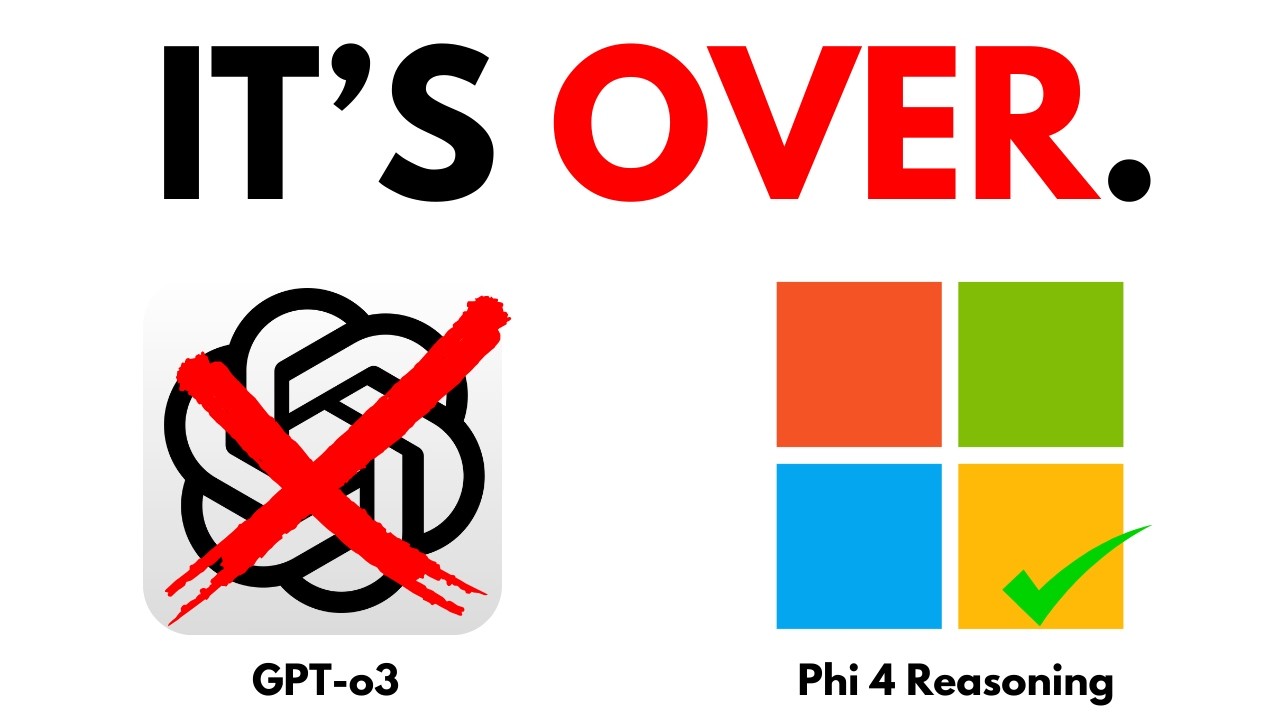The video reviews Microsoft’s open-source 54 reasoning models, highlighting their potential for tasks like coding, math, and science, but criticizing their slow response times and stability issues in practical use. Despite their accessibility and impressive capabilities on paper, the presenter remains skeptical about their current effectiveness due to technical limitations.
The video discusses Microsoft’s recent release of open-weight reasoning models within the 54 family, highlighting that these models are open source under an MIT license, allowing free use, modification, and distribution. Microsoft initially released the 54 models a few months ago, and now they have introduced specialized reasoning versions, including smaller variants that can run on personal computers. The presenter emphasizes that these models are designed to excel in tasks like language understanding, coding, vision, audio processing, and advanced reasoning, positioning them as competitive alternatives to other AI models.
The presenter compares the 54 reasoning models to other popular AI models such as DeepSeek and ChatGPT, noting that while they are not as powerful as the latest proprietary models, they perform impressively given their open nature. The 54 models, especially the reasoning plus variant, are fine-tuned with supervised learning on curated prompts to improve their reasoning capabilities, particularly in math, science, and coding tasks. The smaller mini version, with just 3.8 billion parameters, is highlighted as potentially usable on personal devices, making it accessible for individual developers and hobbyists.
Throughout the video, the presenter tests the models by asking them various questions, including math problems and coding tasks, and observes their responses. He notes that the reasoning models tend to generate longer, more detailed, and seemingly more thoughtful answers compared to proprietary models like ChatGPT or Gemini. However, he also points out issues such as the models getting stuck in infinite loops or taking an excessively long time to respond, which can lead to system crashes or unresponsive behavior, especially when integrated into coding environments like VS Code.
The presenter demonstrates attempts to use the reasoning models for practical tasks, such as generating website code snippets and simulating physics problems like bouncing balls. He reports that the models often struggle with complex or multi-step reasoning tasks, sometimes resulting in unresponsive or broken outputs. He criticizes the models’ performance, especially their slow response times and tendency to get stuck, suggesting that despite their open-source nature, they currently lack the robustness and efficiency of proprietary counterparts.
In conclusion, the presenter expresses disappointment with the current state of the 54 reasoning models, finding them to be underwhelming in practical use due to their slow responses and stability issues. He emphasizes that while the models are promising in theory, their real-world application is hindered by technical limitations. He encourages viewers interested in AI to join a community for learning and sharing workflows, but overall, he remains skeptical about the immediate usefulness of these open-source reasoning models until further improvements are made.
